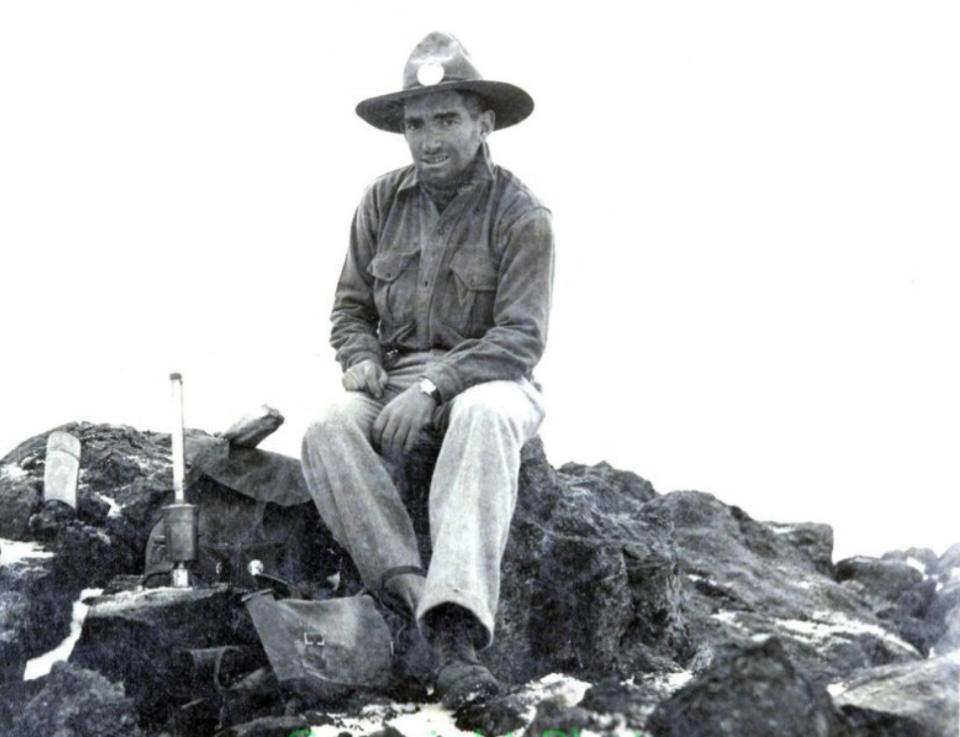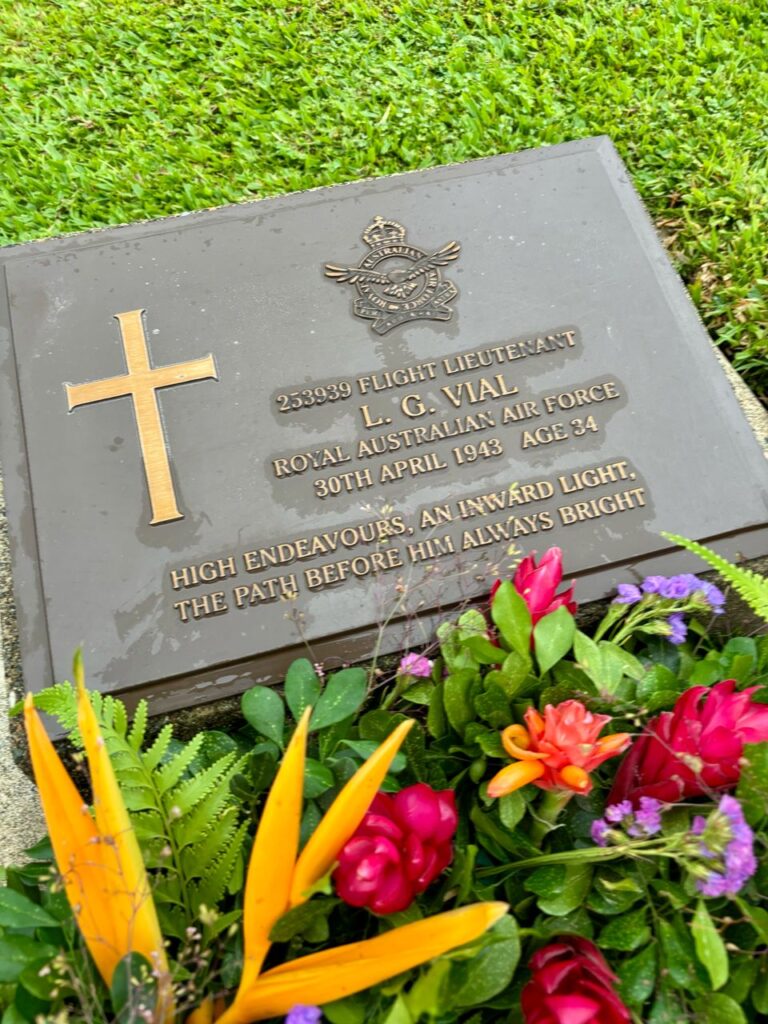LAE, April 25, 2025 – As the rising sun pierced through the misty trees at the Lae War Cemetery this ANZAC Day morning, the solemn sounds of the bugle drifted across rows of white headstones — silent sentinels to sacrifice. Among the more than 2,800 Commonwealth war graves in this hallowed ground lies one name that echoes deeply across the valleys and mountains of Papua New Guinea: Flight Lieutenant Leigh Vial.
Vial, remembered during today’s Dawn Service, was no ordinary serviceman. He was a symbol of an enduring bond between Australia and Papua New Guinea — a bond forged in the fire of war and tempered by mutual respect, courage, and sacrifice.
Australian Consul-General to Lae, Brenton Kanowski, addressed the gathering:
“Operating behind enemy lines, he provided vital intelligence during the New Guinea campaign. He died on active duty in 1943 and is laid to rest here in Lae – a quiet hero whose vigilance and hard work helped change the course of the war in this region.”
Yet Leigh Vial was more than a soldier. Before the war, he was an explorer, a linguist, and a friend to many Papua New Guineans. In 1938, he etched his name in history as the first white man to climb Mount Wilhelm, the country’s highest peak. That climb, into the clouds above Chimbu and Jiwaka, was not about conquest but about connection — a reflection of his deep respect for the land and its people. A busy street in Goroka, Leigh Vial Street, is named after him.

Born in Sydney in 1909, Vial arrived in Papua as a young patrol officer, travelling through some of the most remote and challenging terrain on Earth. He learned languages, mediated disputes, and worked alongside villagers — laying a foundation of trust that would prove critical in the coming war.
When the Pacific conflict erupted, Vial became part of the elite Coastwatchers, a secretive network of Allied operatives scattered across PNG’s rugged interior and coastlines. With a radio and little else, they watched the skies and seas, reporting on Japanese movements and offering a lifeline to Allied command.
Vial’s postings took him to the jungles of New Britain, the Huon Peninsula, and the mountains of Morobe and Madang. Behind enemy lines, he survived on courage, ingenuity, and the unwavering support of local communities. The villagers who risked their lives to help him carry equipment and relay messages are part of the untold story of how Papua New Guineans stood shoulder-to-shoulder with Australians to defend their land.
His calm, precise radio broadcasts earned him the moniker “The Man with the Golden Voice”. His words, though never dramatic, helped save lives and shape the course of battle in Lae, Salamaua, and across the Huon Gulf.
In 1943, returning from a reconnaissance mission, Vial’s aircraft crashed. He was just 34. For his extraordinary service, the United States posthumously awarded him the Distinguished Service Cross — one of its highest honours.
His gravestone at Lae War Cemetery reads:
“HIGH ENDEAVOURS / AN INWARD LIGHT / THE PATH BEFORE HIM ALWAYS BRIGHT.”

These words capture not just the man, but the legacy he left behind — one that still lives in the Highlands town of Goroka, where Leigh Vial Street winds through the heart of the community; in the memory of the people of Mt Wilhelm; and in the whispering winds that sweep across the jungle-clad ridges where Coastwatchers once stood guard.

Today, as Papua New Guinea marks its 50th anniversary of independence, the memory of Leigh Vial is more than a footnote in history. He represents a generation of Australians who saw PNG not merely as a far-flung outpost, but as a nation of great spirit and immense potential. His life reminds us that true friendship, like true heroism, is forged in quiet deeds, not loud declarations.
On this ANZAC Day, we honour Leigh Vial — a son of Australia, a friend of Papua New Guinea, and a man who walked softly but left footprints that will never fade.